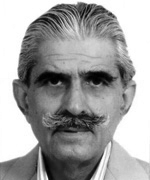 By Ashok Mehta (12 January 2018) – For India, Nepal is geo-strategically the most important country, the crown jewel of the Indian subcontinent and the buffer between India and China through which pass the main avenues to the strategic Indo-Gangetic plains — India’s heartland. King Prithvi Narayan Shah, founder of the modern Nepal, had called Nepal a yam between two boulders. Traditionally, Nepal has both swayed with the wind and maintained equidistance in its relations with its neighbours.
By Ashok Mehta (12 January 2018) – For India, Nepal is geo-strategically the most important country, the crown jewel of the Indian subcontinent and the buffer between India and China through which pass the main avenues to the strategic Indo-Gangetic plains — India’s heartland. King Prithvi Narayan Shah, founder of the modern Nepal, had called Nepal a yam between two boulders. Traditionally, Nepal has both swayed with the wind and maintained equidistance in its relations with its neighbours.
The intensity of India-China proxy war in the region picked up with Prime Minister Modi taking power. Having a China-friendly government in Nepal is breaking India’s bastion. After softly needling China on clarifying the Line of Actual Control, confronting PLA along LAC and giving a long rope to the Dalai Lama, including his visit to Tawang, in 2015, a Beijing think tank thinking aloud said China would punish India. One of the likely places for retribution is Nepal where India has been the dominant power since decolonisation, a privileged position Beijing has envied.
India has had a hand in every major political change in Nepal — dethroning Ranas and restoring monarchy; introducing multiparty democracy; brokering the deal between political parties, Maoists and the monarchy; and ironically, dismantling monarchy.
The only transformation in which India was outmanoeuvred by the Nepalese political class was in drafting the new constitution and provincial mapmaking, reflecting India’s failure in enabling the Indian-origin Madhesis of the Terai plains (derogatorily called Indian agents) to be duly and proportionately empowered in an inclusive constitution. But dominance of the hill people — the Khas-Aryas — has prevailed and India was presented a fait accompli. Instead of gracefully welcoming the constitution, indelicate and inelegant measures were adopted in unsuccessfully enforcing constitutional change which led to the infamous India-inspired Madhesi-executed blockade which caused immense hardship for the Nepalese people and fuelled unprecedented anti-India sentiment and ultra-nationalism. The blockade also pushed the leftist KP Oli government towards China, which joyfully grasped the moment.
Meanwhile, Prachanda-led Maoists, the flagbearers of the transformation of Nepal from constitutional monarchy to a secular, democratic and inclusive republic, having lost ground finally joined the India-supported Nepali Congress-led government hoping to cut their rival leftist Unified Marxist Leninist (UML) party to size and emerging as the numero uno leftist party. In dislodging the Left government, which included the Maoists, New Delhi saw an opportunity to teach the China-backed Oli a lesson. Prachanda once sold on China, but after being out of power for seven years, admitted that India was more important for Nepal than China. He would later switch sides to stay in power.
Initially, when the Maoists were waging war against monarchy, Beijing treated the Maoists with scorn. It would mock them as anti-state rebels, miscreants and hijackers of Mao’s fair name. Once Prachanda came to power, China announced eloquently that “we have now rediscovered the ideological affinities with Maoists.” The election after the civil war, won by the Maoists supported by the mainstream left parties, was a turning point in China-Nepal relations, the former jettisoning its policy of non-interference in internal affairs of Nepal. China spread its tentacles across Nepal, politically, culturally and economically as it enlarged its strategic space.
So, when India first tried to break up the Oli-Prachanda coalition in the early 2016, Beijing formed a phalanx of resistance, but months later, Prachanda on being offered premiership by the Nepali Congress, deserted Oli and aligned withthe India-backed Nepali Congress led by Sher Bahadur Deuba. Soon, Prachanda would again change his mind. In one of the only secrets kept in the history of modern Nepal, the Leftists —the UML and Maoists — encouraged by China had worked underground and established a Left alliance to fight the provincial and federal elections as allies even as Maoists were in government. Prachanda ditched Nepali Congress and India by returning to Oli.
The Left Alliance won not only the national elections but also six out of seven provinces where it will form the government. Earlier, in 2017, it had won the local government elections held after two decades. Everything in Nepal seems to be going for the UML: the people, media, anti-India nationalism and China’s deep pockets. Soon after the civil war, India began losing the plot, unable to fully unify the pro-India Nepali Congress and the Madhesis and keep them together. The geopolitical landscape had changed so drastically beyond India’s comprehension that it continued to rely on its antiquated roti-beti-khoon mantra. Even Modi’s magic moments of 2014 in Nepal of veni,vidi, vici were lost.
Next month, Oli or Prachanda will head the first Left alliance government with China’s backing. Fortunately, the constitution bars any no-confidence motion being presented for the first two years which will allow the two parties to work on their merger and ensure a measure of political stability. This would subordinate the Maoists who fought the civil war and spearheaded the revolutionary agenda to the UML, a bitter pill to swallow for the agents of change. India has, for the present, lost its bastion in the Himalayas, trying to preserve its Madhesi leverage with a ‘half-baked’ plan that lost the goodwill of the majority hill Nepalis and fuel was added to fire through inept diplomatese. But kingmaker Prachanda’s penchant for surprise is still around.
For India, Nepal is the first casualty in its Neighbourhood First policy, a rap that the Chinese will relish.
Ashok K Mehta is Major General (retd) of Indian Army. This article first appeared in The Tribune.


